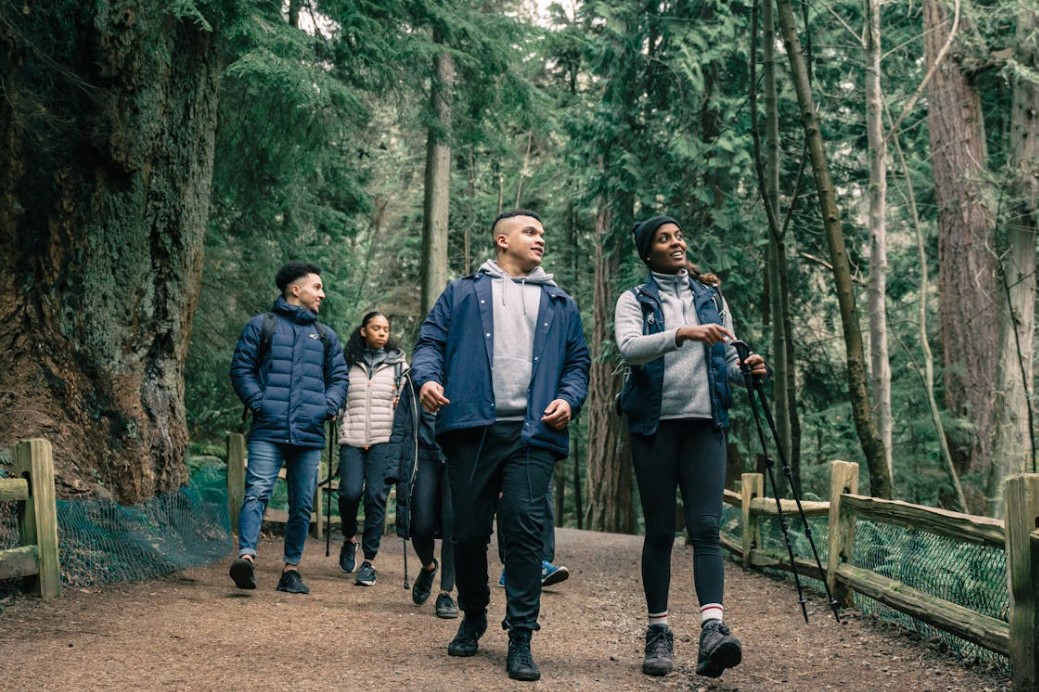
Embarking on a multi-day hiking trip is an exciting adventure that requires careful planning and preparation. Whether you’re an experienced hiker or a novice explorer, having a solid plan ensures a safe and enjoyable experience.
From packing the right gear to planning your route, every detail matters when you’re venturing into the great outdoors.
Packing the Essentials
Packing efficiently is key to a successful backpacking trip. Your gear should be lightweight yet comprehensive enough to cover all your needs.
Start with a high-quality backpack that offers good support. Include a tent, sleeping bag, and sleeping pad suitable for the weather conditions. Don’t forget essential items like a first aid kit, multi-tool, and fire-starting supplies, as well as electronic items like a satellite phone.
If you’re starting your hike from a campsite, you might want to use a solar generator to charge up all your electronic devices before you head off, ensuring you stay connected and safe.

Choosing the Right Gear
Selecting the right hiking boots or shoes is crucial; they need to fit well, provide waterproofing, and be appropriate for the terrain you will encounter. Blisters and foot pain can quickly ruin an adventure, so invest time in finding the perfect pair and breaking them in before your trip.
Additionally, knowing how to layer your clothing is essential. Start with a moisture-wicking base layer to keep sweat off your skin, add an insulating layer for warmth, and finish with a waterproof and windproof outer layer. Fabrics like merino wool and synthetic materials are great for regulating temperature and managing moisture.
Your attire should also be suitable for the expected weather conditions, ensuring comfort and safety on the trail. Don’t forget essential accessories like hats, gloves, and extra socks.
Weather Preparedness
Checking and interpreting weather forecasts both before and during your hike is essential for packing appropriately and avoiding dangerous situations. Apps and websites provide detailed forecasts, but understanding weather patterns in your hiking area is also beneficial.
Pack gear for unexpected changes, including a lightweight rain jacket, an emergency blanket, and extra layers. Knowing what to do in case of sudden weather changes, such as finding shelter or avoiding exposed areas during lightning storms, can be lifesaving. Having emergency shelters, like a bivy sack or an emergency tent, provides additional protection if you need to wait out bad weather. Always keep a close eye on the sky and be ready to adjust your plans if conditions deteriorate.
Planning Your Route
Before hitting the trail, research your route thoroughly. Choose a trail that matches your fitness level and experience. Consider the distance, elevation gain, and terrain difficulty.
Check for any trail conditions or weather updates that might affect your journey. Carrying a detailed map and a GPS device is crucial for navigation.
Leave No Trace Principles
These principles include proper waste disposal, minimizing campfire impact, and respecting wildlife. Carry out all trash, leftover food, and litter to keep trails pristine. Use established fire rings, keep fires small, and burn all wood and coals to ash, then scatter cool ashes. By following these guidelines, you ensure that the natural beauty of the trails remains untouched for future hikers.
Selecting campsites that reduce environmental impact is also crucial. Camp at least 200 feet from lakes and streams to protect water sources, and choose durable surfaces like rock, gravel, or dry grasses for your tent. Respect wildlife by observing from a distance and never feeding animals, as this can harm them and disrupt natural behaviors.
Staying Hydrated
Water is your most critical resource. Plan your water sources along the trail, and carry a water filter or purification tablets. Hydration systems like hydration bladders or water bottles with built-in filters are convenient for on-the-go drinking.

Remember to drink regularly, even if you don’t feel thirsty, to prevent dehydration. It’s also wise to carry extra water in case your planned sources are dry.
Food and Nutrition
Proper nutrition is vital for maintaining energy levels. Pack non-perishable, lightweight, and nutritious foods. Options like dehydrated meals, trail mix, energy bars, and jerky are excellent choices.

Plan your meals to include a balance of carbohydrates, proteins, and fats. Ensure you have enough food to last your entire trip, with some extra in case of emergencies. Cooking equipment should be minimal but efficient, such as a compact stove and lightweight cookware.
Physical Preparation
Training your body for the demands of hiking is essential. Start with shorter hikes, gradually increasing your distance and load. Focus on building endurance, strength, and flexibility.
Pay special attention to your legs, back, and shoulders, as they will bear the brunt of the weight. Regular cardio workouts, strength training, and flexibility exercises can help condition your body for the rigors of the trail.
Safety and Emergency Preparedness
Safety should always be a top priority. Inform someone of your travel plans and expected return date. Carry a first aid kit tailored to the specific needs of your trip. Know basic first aid and how to handle common trail injuries.
Familiarize yourself with the local wildlife and learn how to avoid encounters. For added safety, carry a whistle, mirror, and emergency blanket.
Be Prepared
Preparing thoroughly ensures that your multi-day hiking trip is safe, enjoyable, and memorable. With the right planning, gear, and mindset, you can embark on an adventure that not only tests your limits but also offers unparalleled experiences in the heart of nature.

Tiffani Rose
I am Tiffani, a freelance blogger. I had been writing blogs for over 5 years. Home improvement, gardening, and camping are my favorite niches. Blogging helps me to share my experience with other people.













Leave a Reply